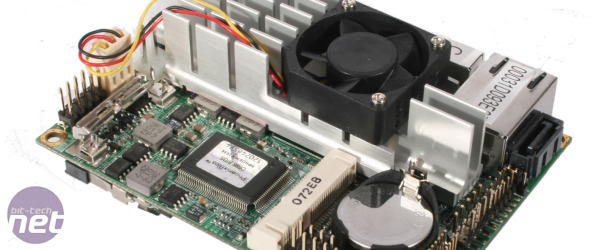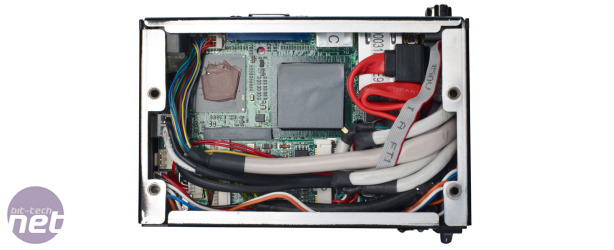
Performance Analysis
The GG LP-170 is perhaps the smallest PC we’ve tested, but that doesn’t excuse it from running a gauntlet of application and game tests – we’re immune to its powers of cute here at bit-tech. For testing, Green Gadgets provided a 60GB Patriot Inferno SSD with a copy of Windows 7 Ultimate 64-bit pre-installed, and a 4GB SODIMM of 667MHz DDR2 memory.Unfortunately, the Intel Atom processor made typically slow work of our Media Benchmark tests. Its score of 194 in the image editing test was particularly low, especially when compared with a system based around AMD’s similarly low-power E-350 APU.
Predictably, gaming was also too much of a challenge for the GG LP-170, thanks to its woeful Intel GMA 3150 GPU. The system couldn’t return playable frame rates in our test games, even when we dropped the settings and resolutions to their lowest settings.
However, you’d be masochistic to expect the GG LP-170 to encode video all day – the system is more likely to spend its time as a small media PC, a POS system controller or a basic office PC, and for these purposes, the GG LP-170’s performance is fine. A less demanding OS than Windows 7, such as Xubuntu or Damn Small Linux, would also help.
Even with Windows 7 installed, the PC was able to browse Flash-heavy websites, play music, and create and edit Word and PowerPoint documents as long as it only performed one task at a time. Unfortunately, some of our high bit-rate test videos were noticeably choppy, but you can add a Broadcom video acceleration mini-PCI-E card to cure this problem.
The GG LP-170 was also one of the most power-frugal PCs we’ve tested, drawing just 18W when idle and 25W when fully loaded. Despite drawing little power, the CPU idled at around 94˚C and hit 109˚C once the PC was loaded for a few hours. This is still below the 125˚C thermal limit of the Atom CPU, but we measured even the sides of the case (let alone the heatsink portion of it) as exceeding the 60˚C recommended operating temperature of the Commell motherboard inside.

If you opt to buy the Pico-ITX board OEM without the case, then it will come with a heatsink and fan assembly
Clearly, the heatsink element of the case struggled to dispose of the waste heat of the Atom CPU, as the surface of the heatsink hit a scorching 85˚C when the PC was under load. This wouldn’t be a major issue for a standard CPU heatsink, as it would be housed inside a case, but having such a hot surface on your desk could be dangerous. Stuffing the GG LP-170 into a tight space, such as a glove box so that it can act as a car PC, will exacerbate this issue.
Conclusion
The idea of a tiny, passively cooled PC is easy to get excited about. Sadly, the Green Gadgets LP-170 runs very hot and is only quick enough for basic tasks. You’ll also need to give the system plenty of room to breathe, or even mod a fan to the external heatsink if you plan to use it.Finally, after you’ve added a storage device, a SODIMM and a PSU, plus an operating system, you could be looking at a total price of around £500. This isn’t outrageous for such a specialist PC, but you’d have to really need a tiny, passively cooled PC to seriously consider stumping up the cash for a relatively limited system.
- Speed
- x
- x
- x
- x
- -
- -
- -
- -
- -
- -
- 4/10
- Design
- x
- x
- x
- x
- x
- x
- x
- -
- -
- -
- 7/10
- Hardware
- x
- x
- x
- x
- x
- x
- -
- -
- -
- -
- 6/10
- Value
- x
- x
- x
- x
- x
- x
- -
- -
- -
- -
- 6/10
- Overall
- x
- x
- x
- x
- x
- x
- -
- -
- -
- -
- 6/10

MSI MPG Velox 100R Chassis Review
October 14 2021 | 15:04









Want to comment? Please log in.